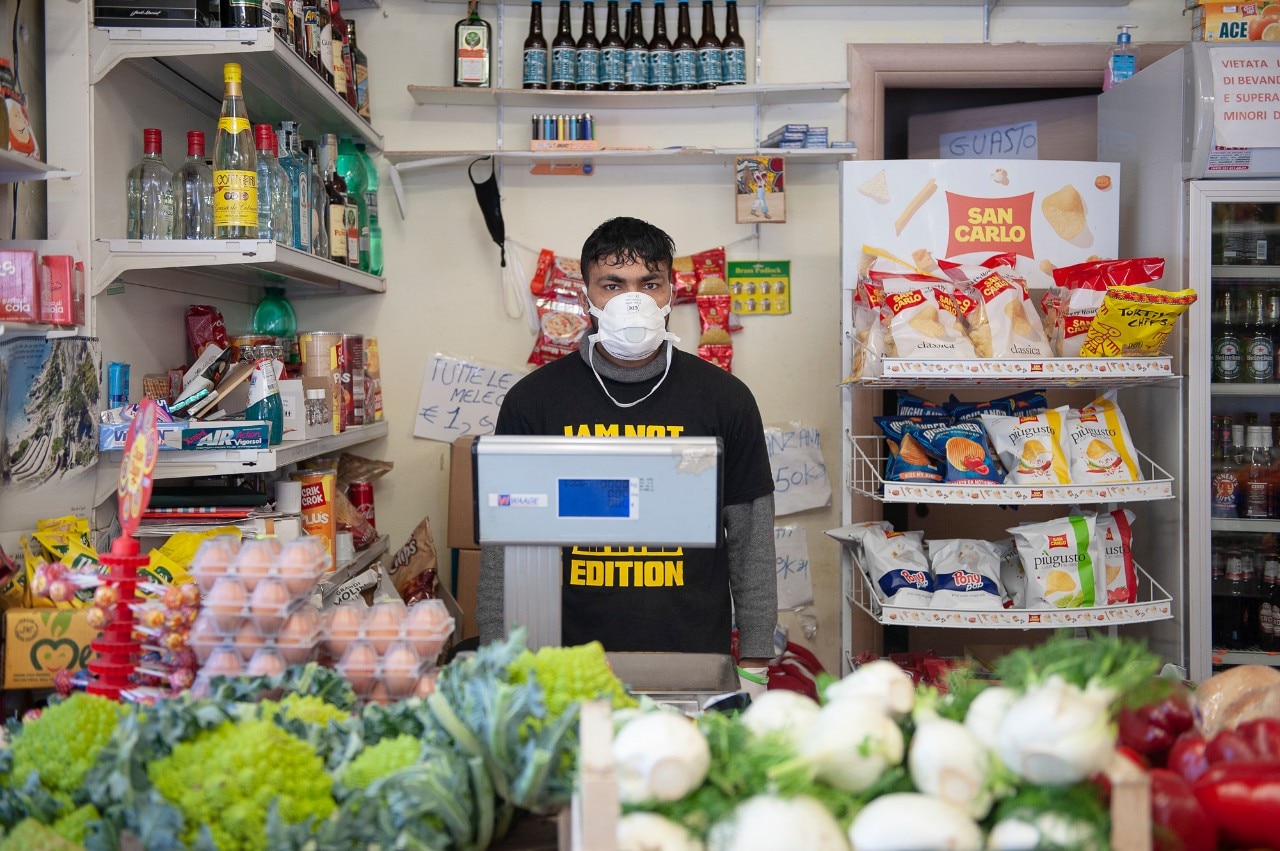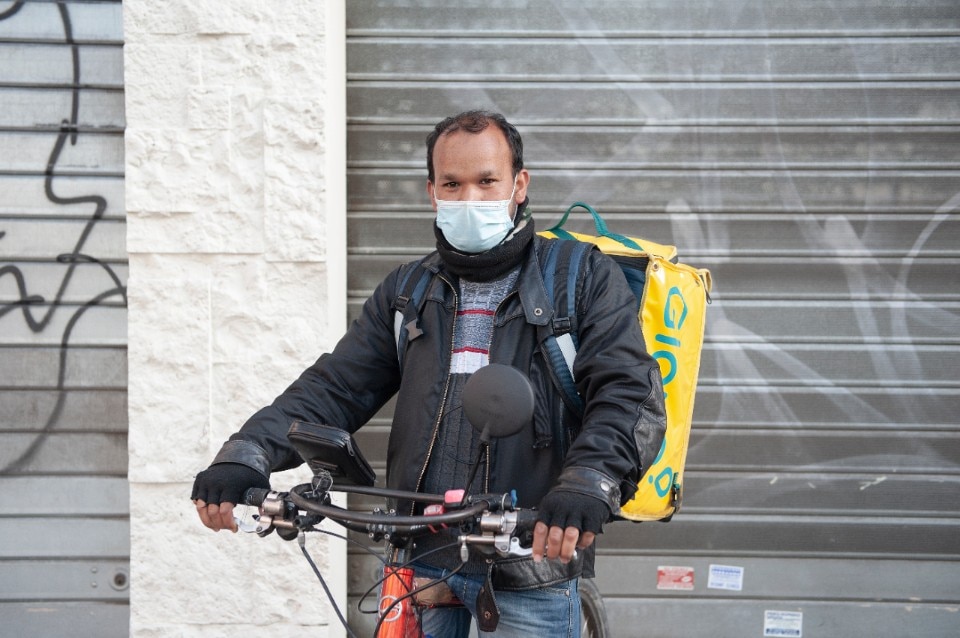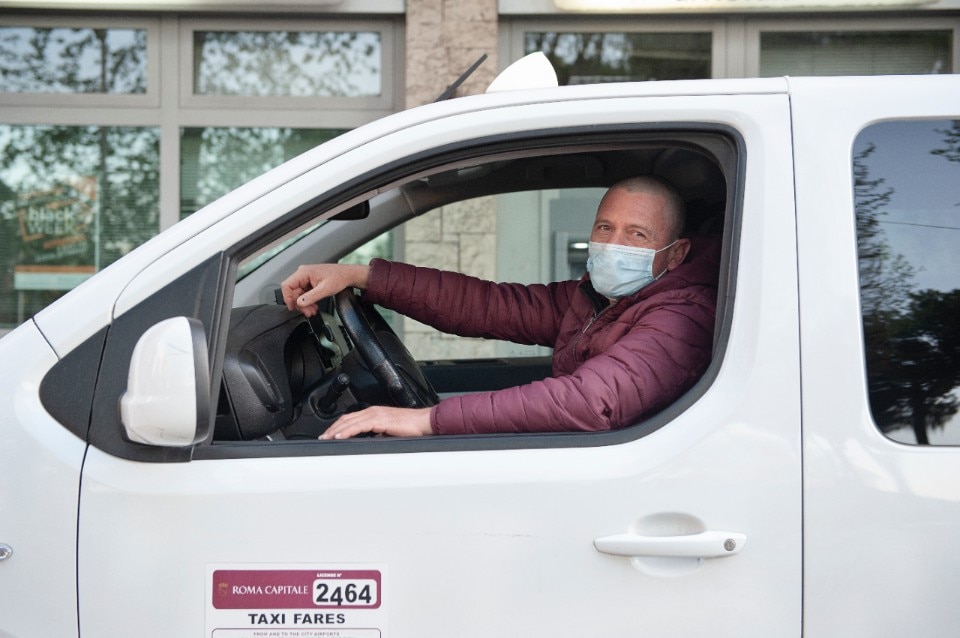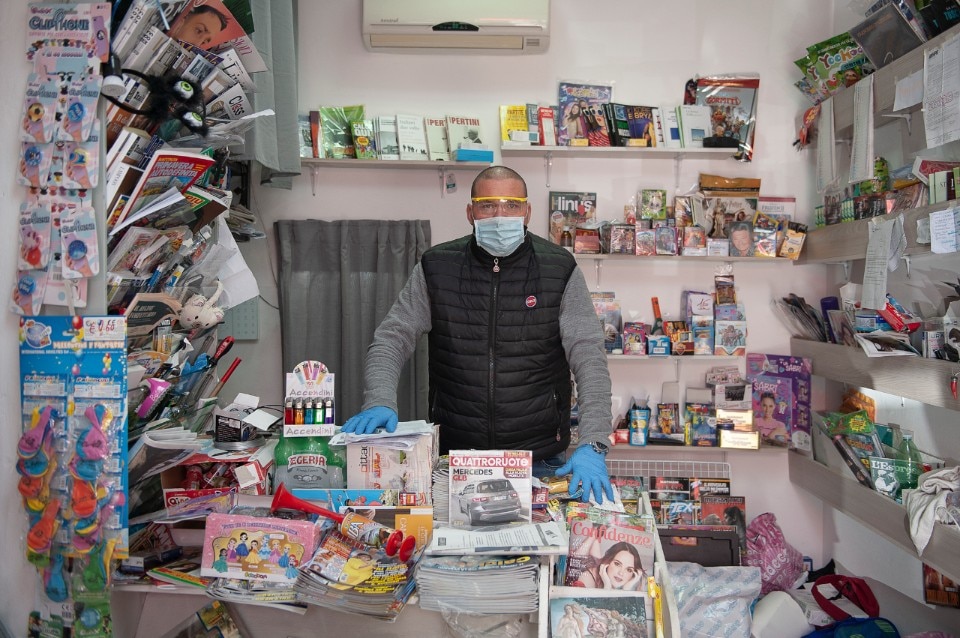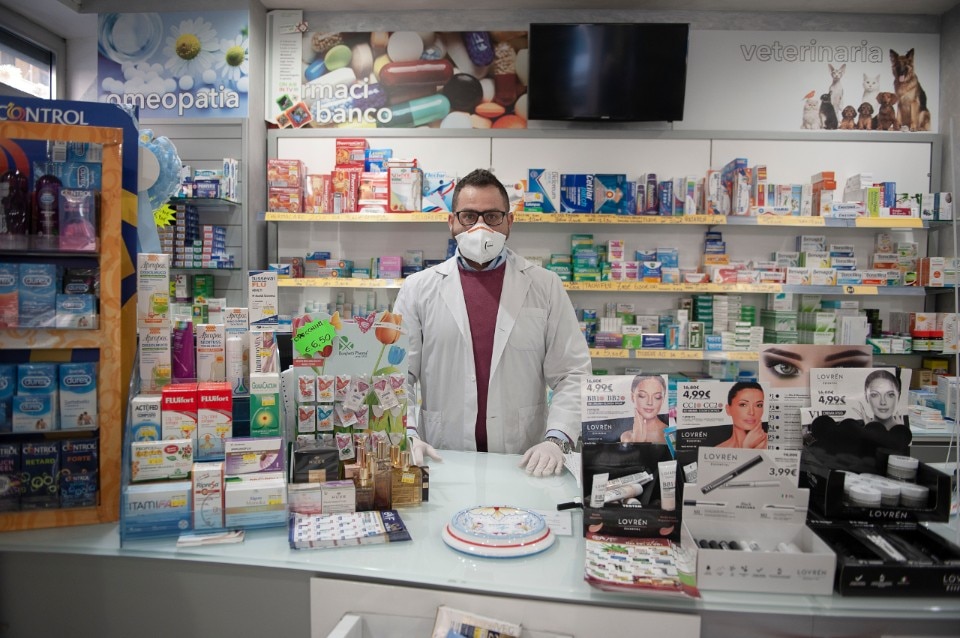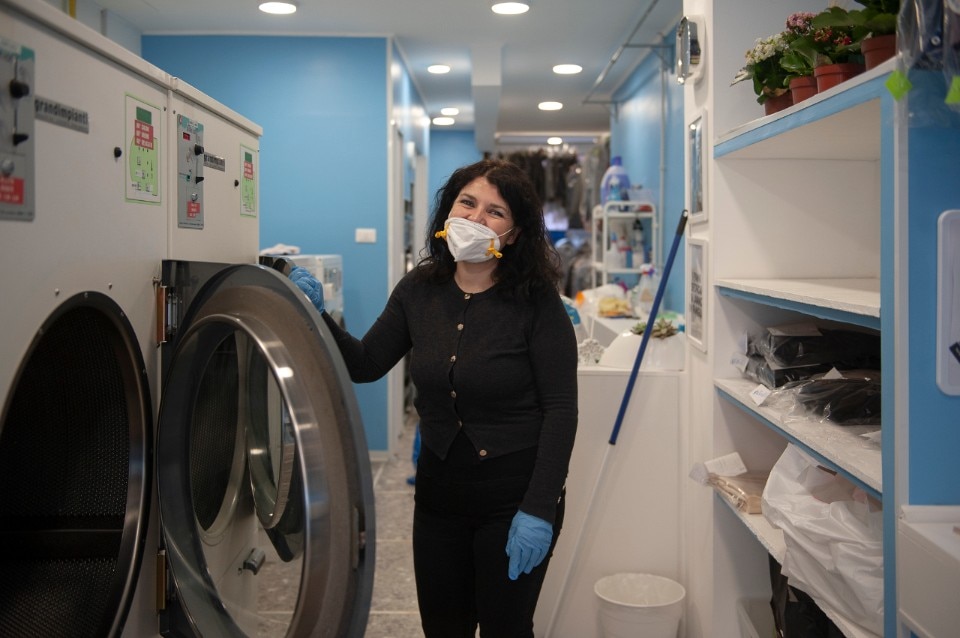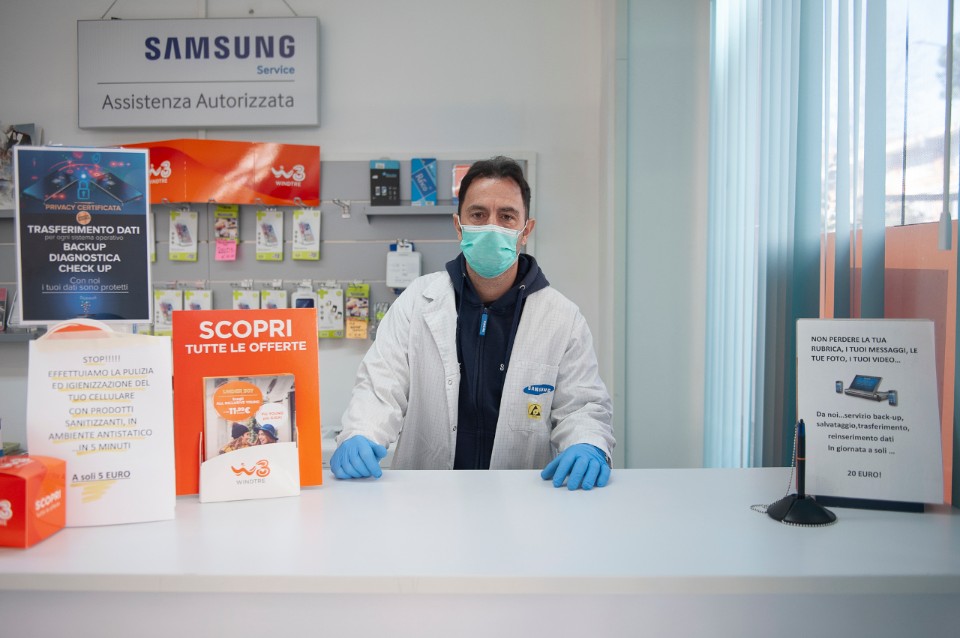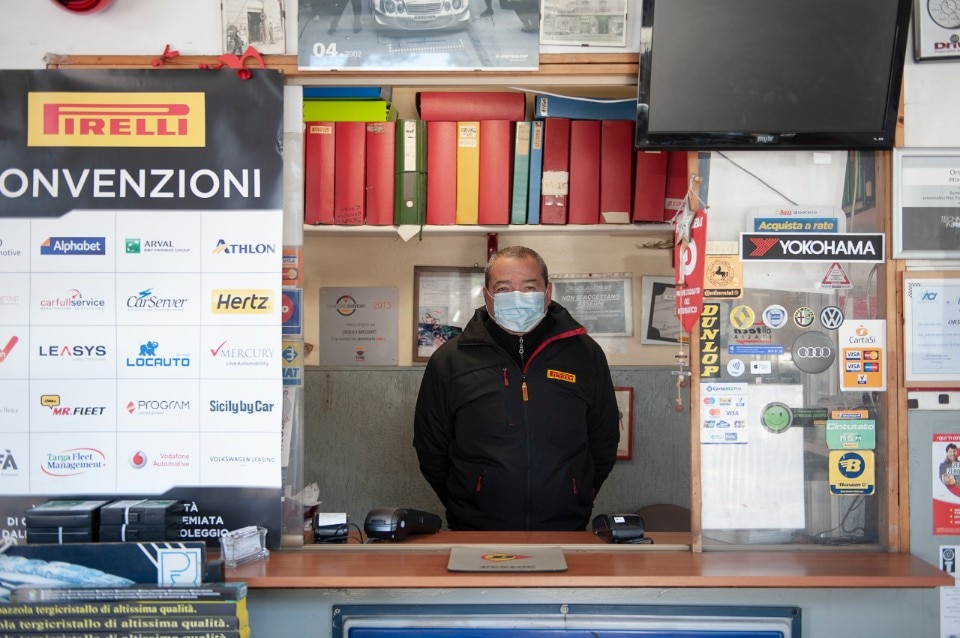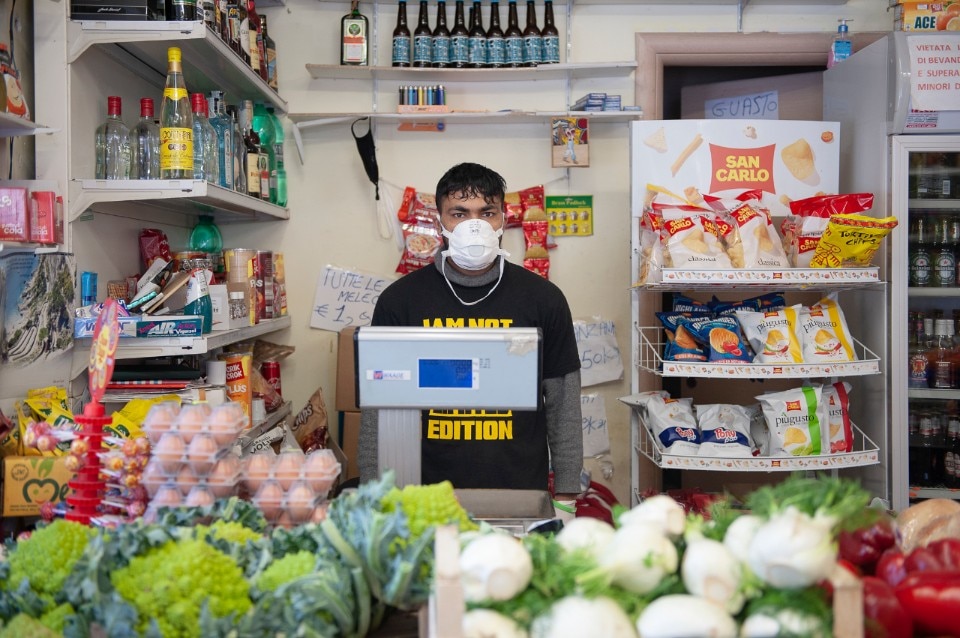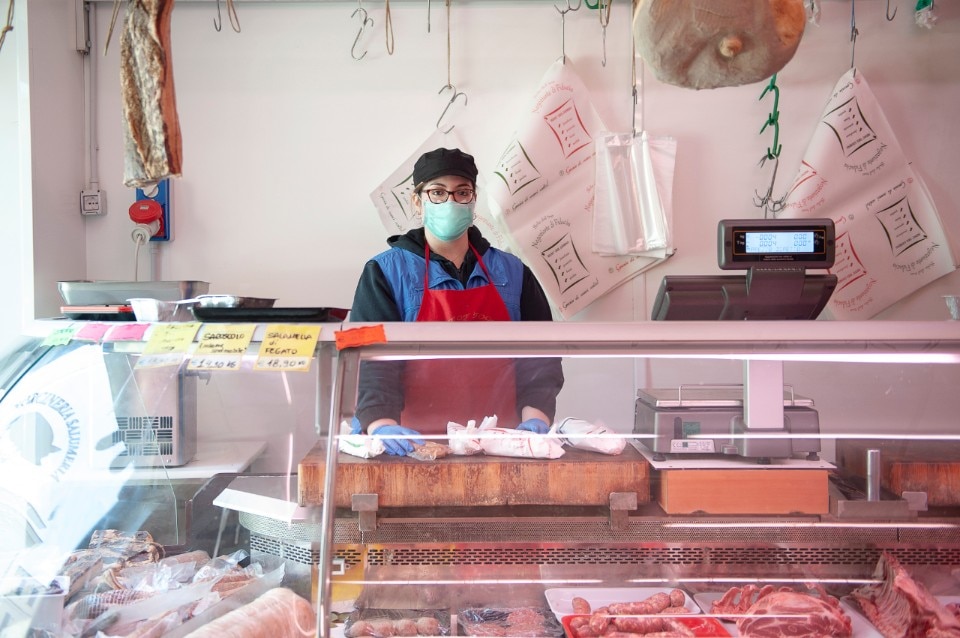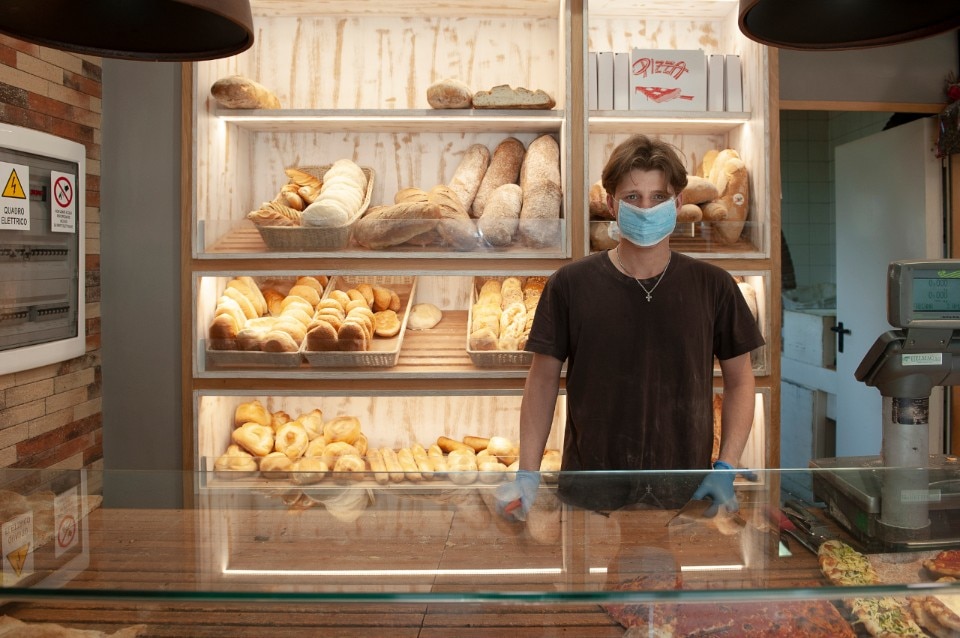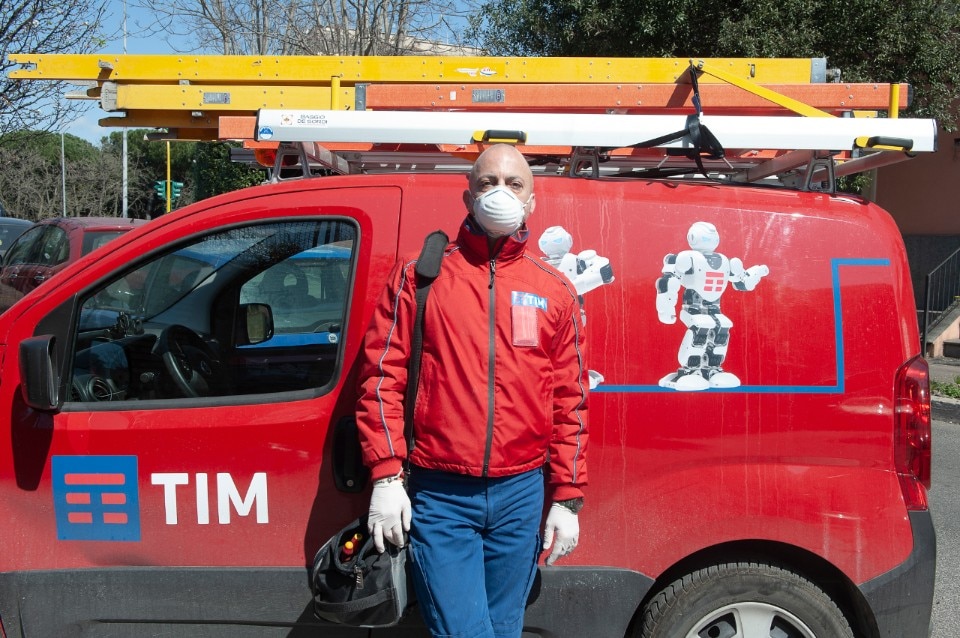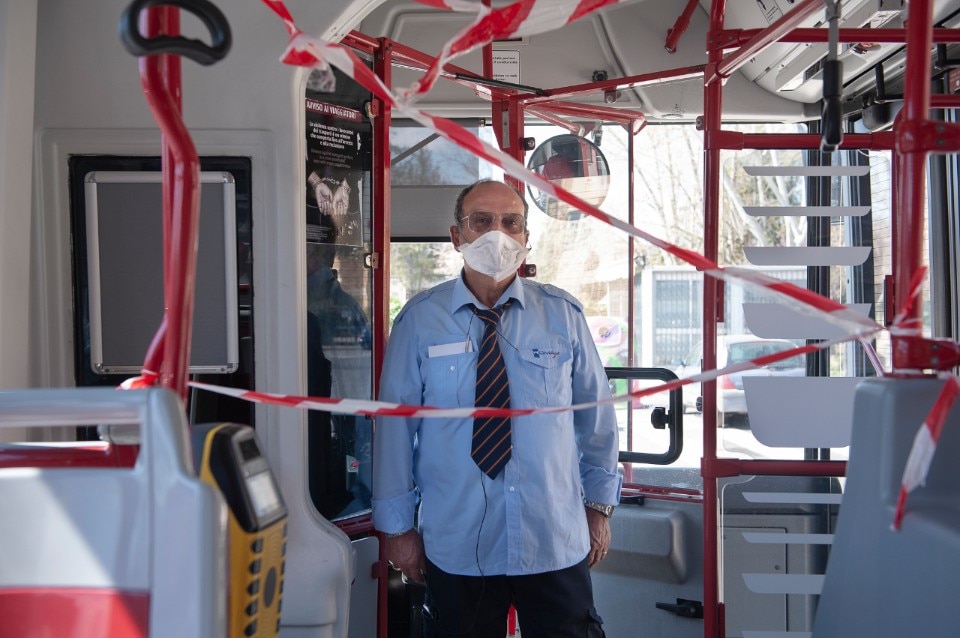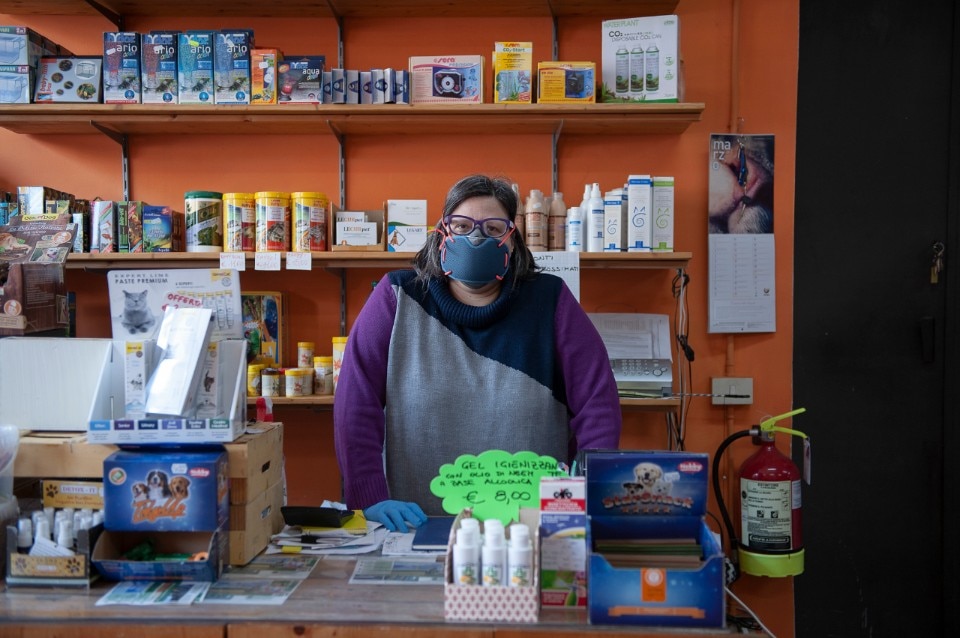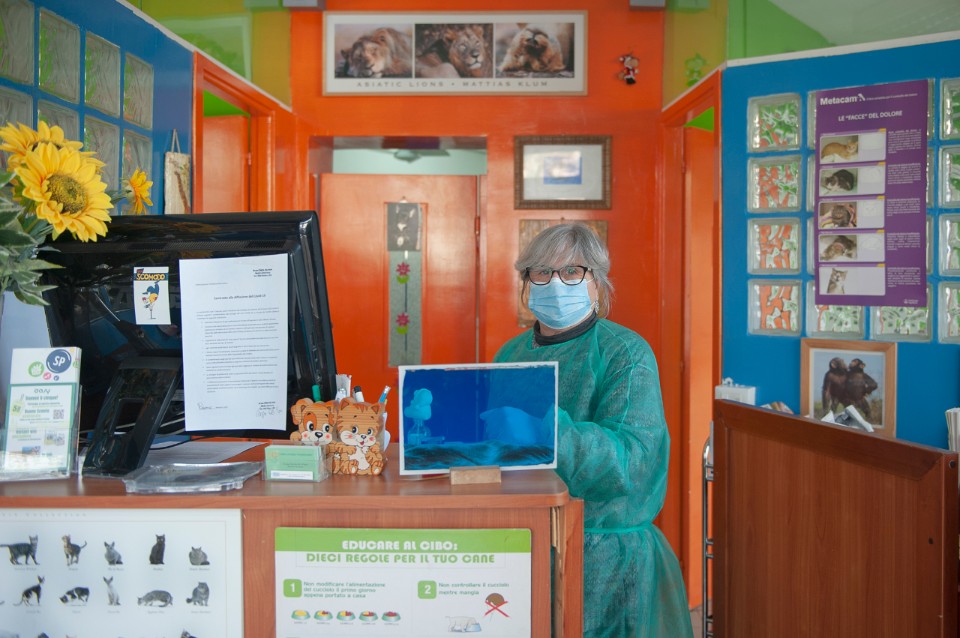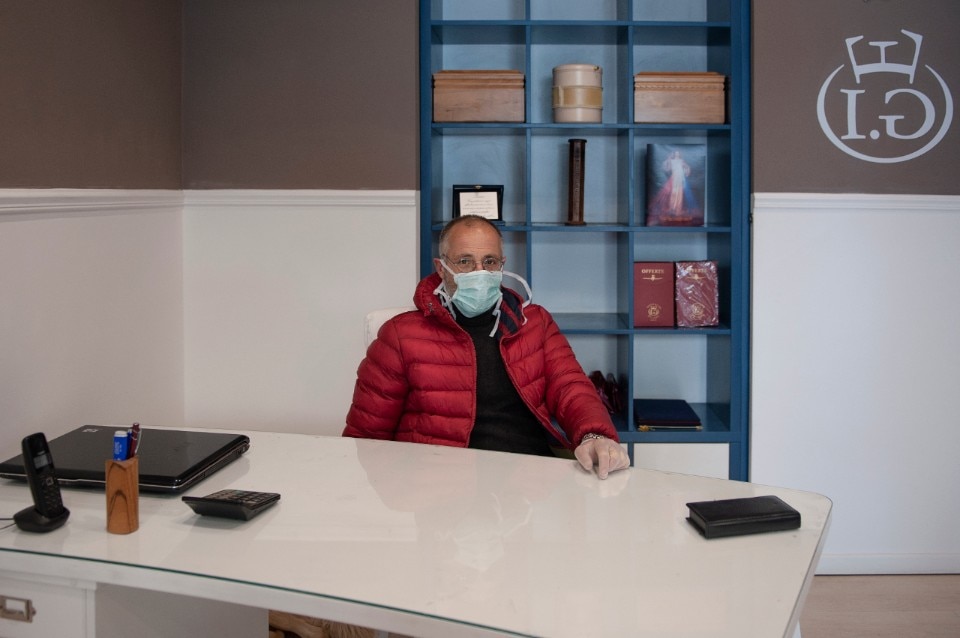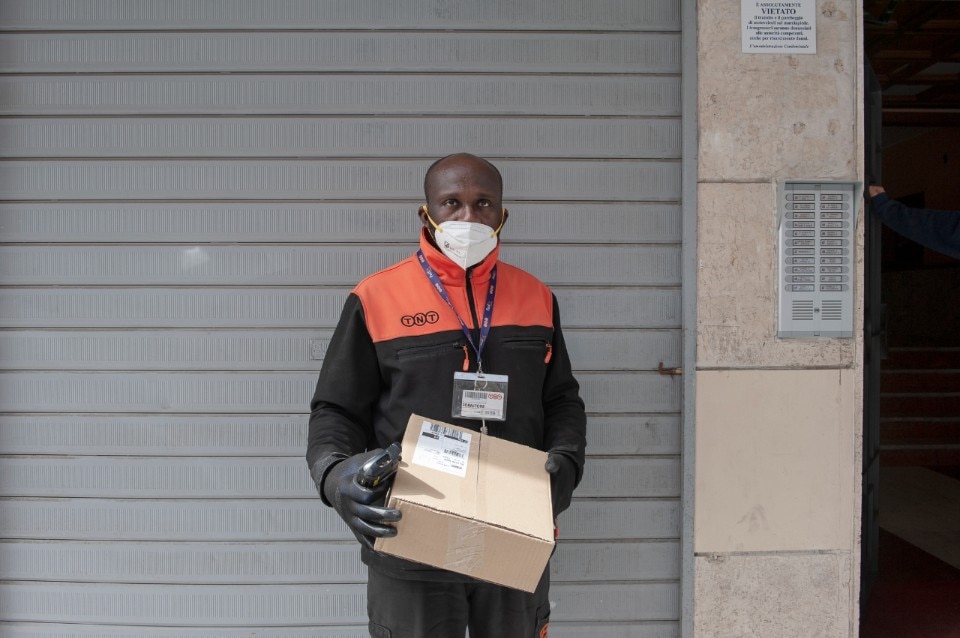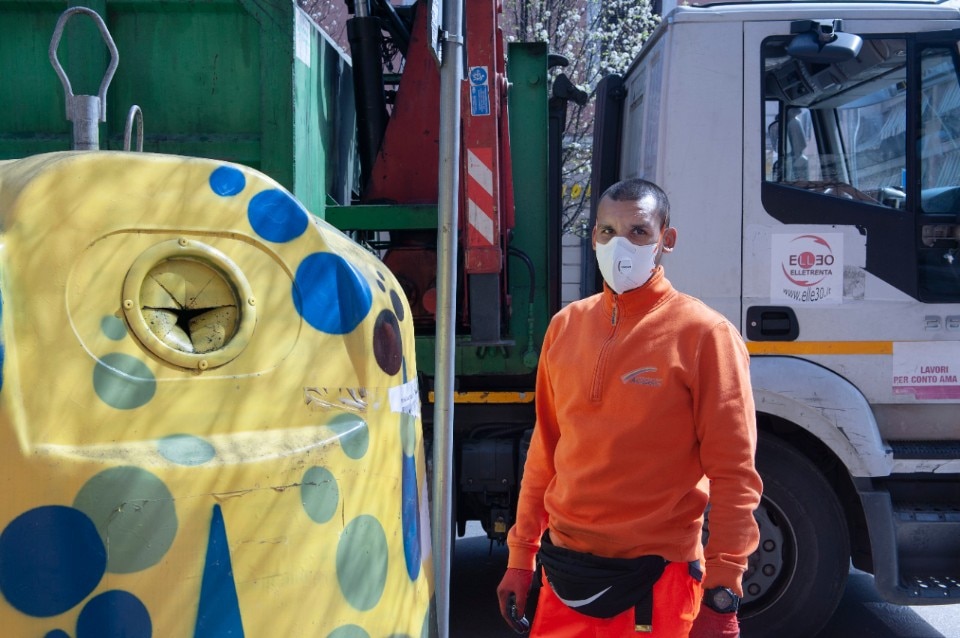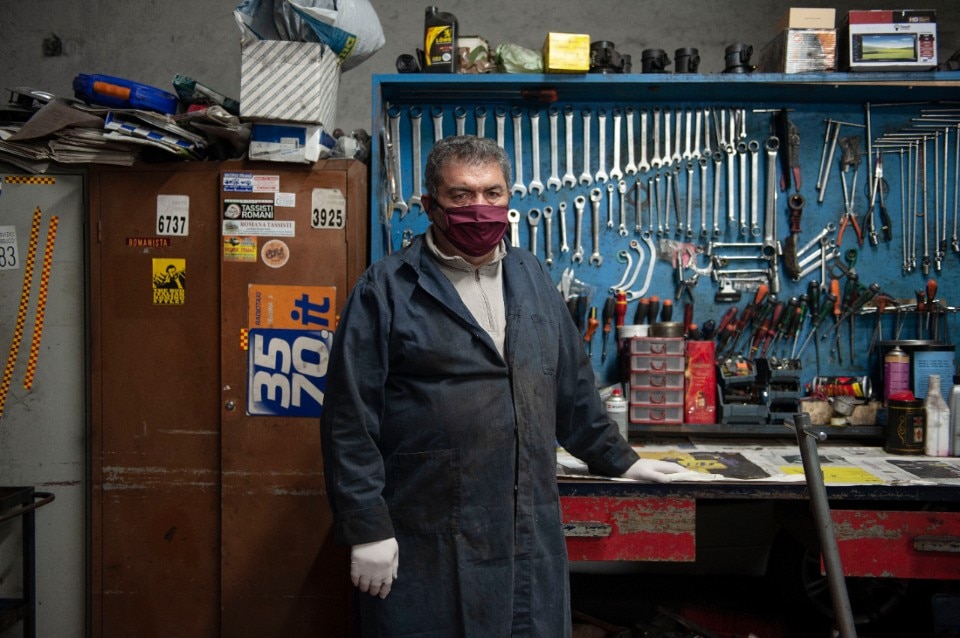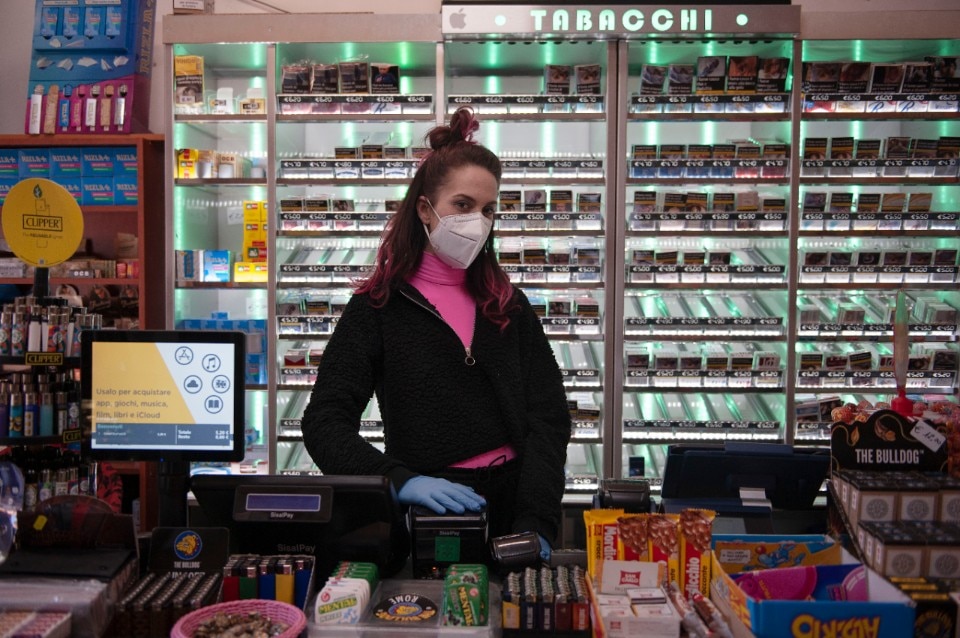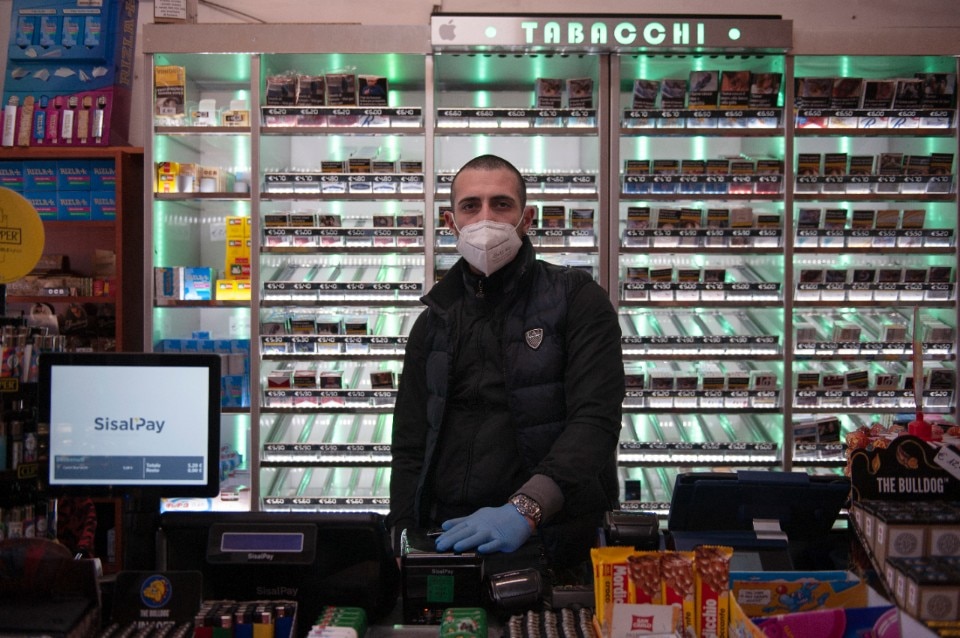Print this article, don’t read it, and take a quick look at the photos. Put everything in a drawer and set an alarm that will go off in ten years’ time, on a random April day in 2030.
Then, wait for 2021 to come, and then 2022, 2023 and so on… until New Year’s Eve 2030: now you can finally read the article and look at the photos, postcards from the past narrating the long months of the apocalypse. That’s pretty impressive, isn’t it? And in ten years, in 2030, many things will have happened.
What I’m asking you to do now is to take a head start on this thing. Let’s do something about it: let’s read this article. Let’s try to imagine what will change, starting with the workers portrayed in the photos.
First of all, who are they? They are some of those people who have continued to do their job even during the lockdown, even though they still are in close contact with the public – the Italians who have been locked up inside their homes for more than a month and a half.
Human beings, men and women, who have continued to leave their homes every morning to go somewhere: newsagents, pharmacists, laundresses, technicians who repair smartphones, tire repairers, mechanics, shop assistants in small grocery stores, butchers, bakers, public transport drivers, garbage collectors, tobacconists, food riders. They were all photographed in Rome, but it could be anywhere in Italy, anywhere in the entire world.
How will their jobs and working environments have changed over the next ten years?
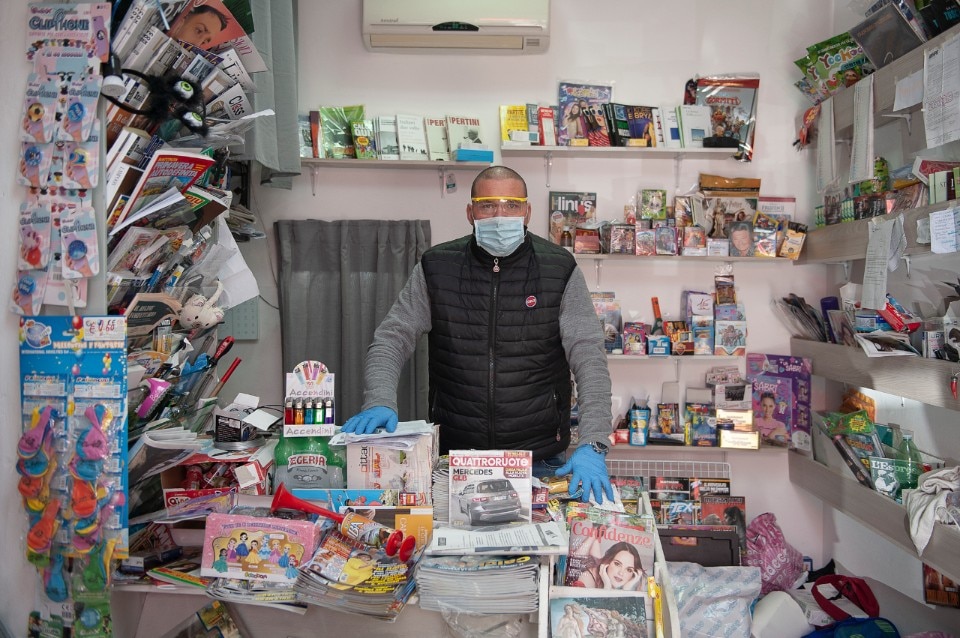
Imagining a ten-year scenario is the most reasonable thing to do: it is useless to make short and medium term conjectures, because we would only think of grotesque ideas and suggestions, like the Plexiglas booths on Italian beaches and restaurants that someone came up with recently. These ideas are the result of a moment of collective psychosis – after all, the pandemic has affected our dreams [1], as if we were at war, controlled by a totalitarian regime [2] – and of our inability to start planning the life we’ll live in the next six months or year. We would all love to find a solution in the short and medium term, but we will not manage to do it until we start focusing enough on finding that solution. We can’t concentrate. Assuming there even is any solution – but almost certainly there isn’t. We are just not used to not having solutions.
What I’m asking you to do now is to take a head start on this thing. Let’s do something about it: let’s read this article. Let’s try to imagine what will change, starting with the workers portrayed in the photos
Will we go to the stadium, protected by visors and masks, as if we were in a hospital ward? Will it be the same thing also for concerts, and wherever there’s a risk of create a large gathering? So even at work, or only if we do certain jobs?
Spaces cannot be changed as easily as our individual behaviors, so we’ll have to change the latter. But in 2030, even those temporary changes will be just a bad memory of a dark phase in our lives. In part, this is the "strange purgatory" to which we will be condemned and which Juliette Kayyem talks about on The Atlantic, but again, it is still too early – today, 2020 – to objectively imagine the future. One must make the effort to change perspectives, and keep in mind that even the purgatory is a temporary condition, and only there, according to Catholic tradition, we can achieve the necessary holiness to enter Paradise.
We should make the effort to start imagining the long-term scenario of our normality in 2030, the year you’re reading this article. Because it is not true that normality will not come back: it will come back, with its good and bad aspects, but it will take a long time – a time that can be measured in years, not months. It will probably take a few years.
Three years? Five? Ten? In this first part of the game I want to play with you readers, I’ve decided it’s ten years, so let’s focus on this ten-year, long-term scenario.
And let’s take a look at the pictures of the workers on these pages.
How will their working environments have changed? In 2030, will these jobs still exist?
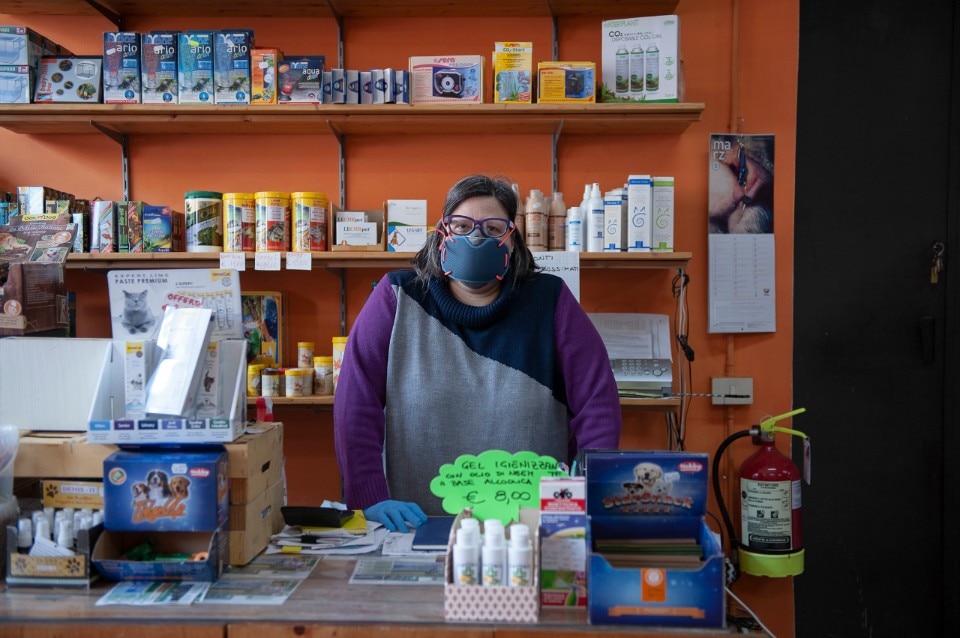
With a pending global recession marked by tens, maybe hundreds of millions of people unemployed [3] – the equivalent of 195 million lost jobs, according to the International Labour Organization [4] – one wonders whether there will still be room, in 2030, for newsstands, tire shops, and so on.
Newsstands, which have been affected by the crisis for quite some time – before the Coronavirus, in 2019, two newsstands a day were closing all over Italy – perhaps have no future. They will disappear like the amusement arcades with coin-op games and the grocery stores. Or maybe, just like today’s (2020) grocery stores, they will become sophisticated places that offer an authentic, elegant gastronomic experience. Elite places for elite products, just like what newspapers will be in 2030.
Pharmacies are likely to look pretty much the same as they do today: their professional order is too solid, their service is too essential to be overwhelmed by one of the disruptions that periodically upset a sector. Even though something is changing in this field, for example with Brigitte, a Glovo-like app that delivers medicines right at your doorstep. But even the riders will have to collect these medicines somewhere: and it will probably be from the pharmacies.
The possibility for doctors to make prescriptions via email and smartphone – the result of the emergency decree in the days of the pandemic crisis in Italy – is likely to be a break destined to modernize a system as old as Aesculapius.
We should make the effort to start imagining the long-term scenario of our normality in 2030, the year you’re reading this article. Because it is not true that normality will not come back: it will come back, with its good and bad aspects, but it will take a long time
Speaking of smartphones, we’ll certainly still have them in our pockets in 2030 – that’s when you’re reading this article, right? – and they’ll be more powerful, with more cameras, more RAM… but they’ll still break.
It’s inevitable, because industrial obsolescence is our inescapable destiny: there will be official service centers as well as small shops, maybe run by third, fourth generation Chinese people, that will remind us of the background where Rick Deckard moves in Blade Runner – what a coincidence: the film is set in 2019, right before our apocalypse – where to hope for a miracle that will replace a screen, and so on.
Of course, industrial obsolescence does not only affect smartphones and any other technological object that needs programmed assistance, it also affects our cars. We are thinking of mechanics, tire shops, car dealerships. The car sector is the sector hardest hit by the coronavirus crisis [5], with car registrations dropping drastically. During the future global recession, in 2021 and 2022, it’s hard to believe that Italy will sell more cars than before, but who knows: there are also those who believe the opposite, that social distancing will particularly strengthen the car sector: To protect yourself from COVID-19, is there even something safer than travelling alone in a car? Of course. Until you get in a car accident.
Open letter from public health & transport researchers calls on government to support safe walking & cycling (in terms of infection & injury risks) during the COVID-19 pandemic: https://t.co/aybJ8tYrF1
— Dr Rachel Aldred (@RachelAldred) March 17, 2020
It must be said that even before the coronavirus crisis, it wasn’t a happy time for cars and dealerships: it’s from at least 2010 that the automotive industry has understood that cars are no longer the object of desire of the new generations. Provided that in the cities of tomorrow, in the cities after Covid-19, there will be room for cars, which is why the life of the tire repairer and mechanic in the photos could change drastically. Fewer cars around – and perhaps more bicycles and wider sidewalks, as suggested by an open letter from 50 transport academics – and thus less work for those who repair them.
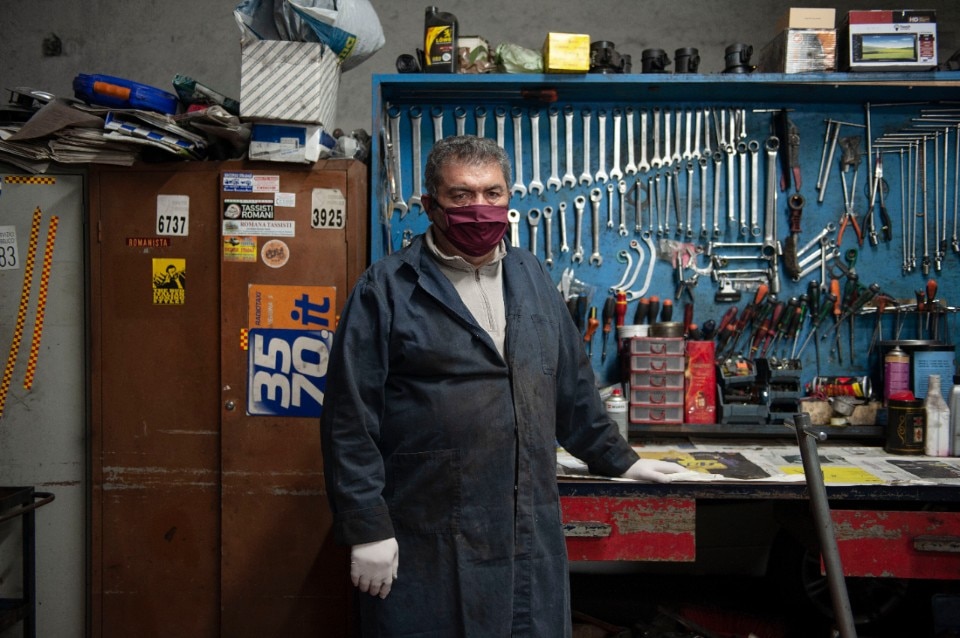
Perhaps we are going to wave goodbye also to public transport drivers because, in ten years from now, they will have probably been replaced by the independent driving systems, which will conquer at least the entire public service. But about the others?
The small neighborhood grocery stores will keep on going, after an extraordinarily prosperous period in the months of lockdown, but it is easy to imagine that once the lockdown will be over, people will go back to shopping in malls, hypermarkets, and online again. Maybe more than before. In China, this phenomenon has already started: it is called revenge spending [6].
Garbage collectors, tobacconists and riders will still be there, reminding us that we will never get rid of garbage, as well the fact that we are too lazy even to do a bit of cooking. But we are reading this article in 2030, and it should all be clear by now. Isn’t it?
- [1]:
- ‘i dream of covid’ Tracks Subconscious Under Quarantine, Mary Louise Kelly, 13 aprile 2020, npr.org
- [2]:
- Nel Terzo Reich si sognava così, Juliette Kayyem, Bruno Bettelheim, 12 novembre 1991, La Repubblica
- [3]:
- The True Costs of the Covid-19 Pandemic, Nason Maani e Sandro Gaela, 13 aprile 2020, scientificamerican.com
- [4]:
- COVID-19: impact could cause equivalent of 195 million job losses, says ILO chief, Giles Clarke, 8 aprile 2020, news.un.org
- [5]:
- Batosta sul mercato auto europeo, vendite dimezzate a marzo. In Italia il crollo peggiore, Paolo Griseri, 17 aprile 2020, repubblica.it
- [6]:
- Chinese luxury industry rebounds from coronavirus thanks to ‘revenge spending’, Robert Williams e Jinshan Hong, 12 marzo 2020, fortune.com


